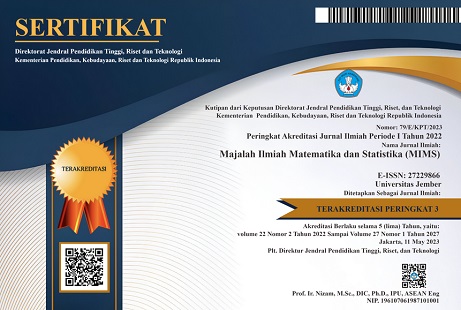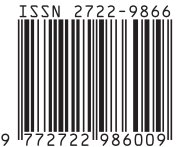ANALISIS STRUCTURAL EQUATION MODELING (SEM) DENGAN MULTIPLE GROUP MENGGUNAKAN R
Structural Equation Modeling (SEM) Analysis with Multiple Group Using R
DOI:
https://doi.org/10.19184/mims.v19i2.17272Abstract
Structural Equation Model (SEM) is a statistical technique with simultaneous processing involves measurement errors, indicator variables, and latent variables. SEM is used to test hypotheses that state the relationships between latent variables when latent variables have been assessed through each of the indicator variables. Multiple Group SEM is a basic model analysis that uses more than one sample. This analysis aims to determine whether the components or models of measurement and structural models are invariant for the two sample groups. In this study, the data generated by some requirements. First, the data generated with sample size n = 250. The first generated data is homogeneous data where the measurement model is the same as the structural model in group 1 and group 2, while the second data is non-homogeneous data where the measurement model and the structural model in group 1 and group 2 is not the same. The data was analyzed using the help of the lavaan package available in R to obtain SEM estimation results and Goodness of Fit Model from some data that was formed. From the results of the merger of the two groups, it shows that the invariant of the two models with the largest df (63) which is Fit Mean model states the simplest model. However, the smallest df (48) with Fit.configural model states the most complex model.
Keywords: SEM, Multiple Group, R Program







